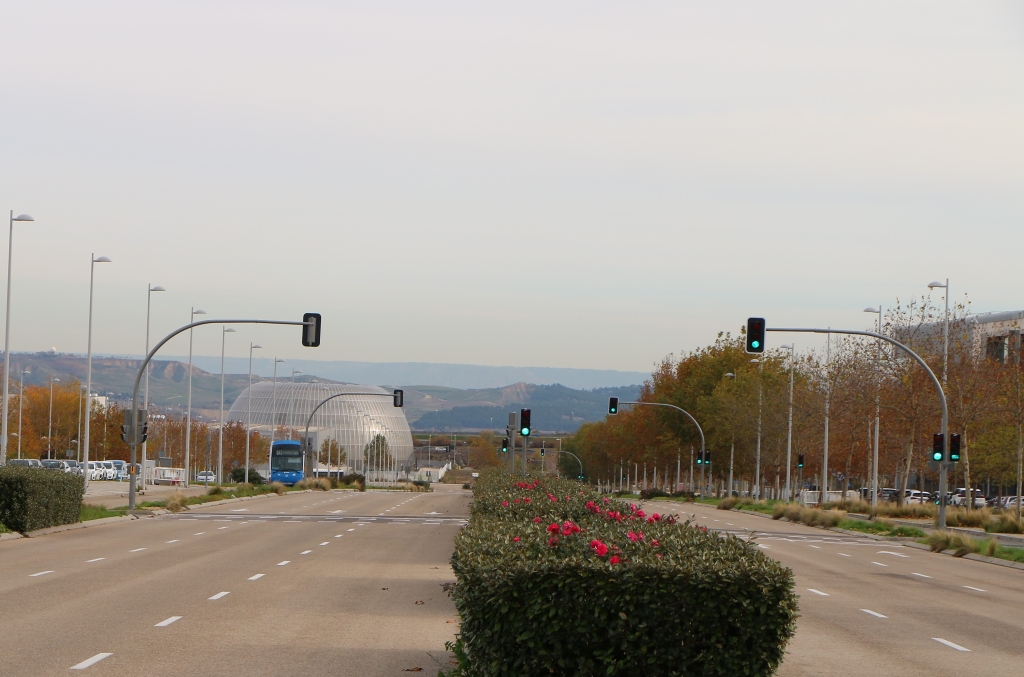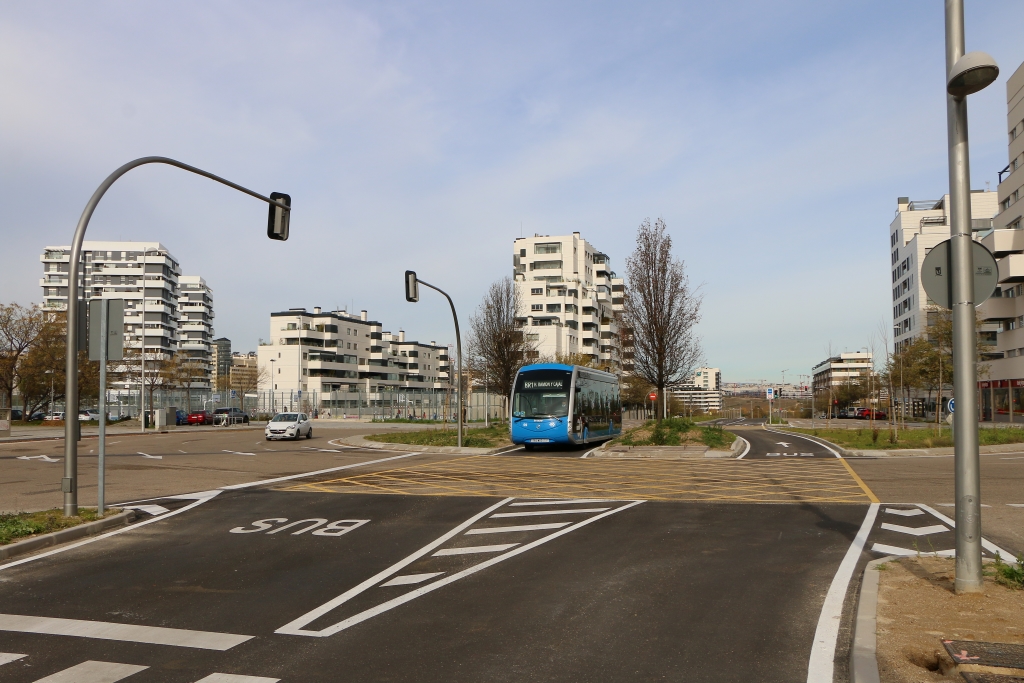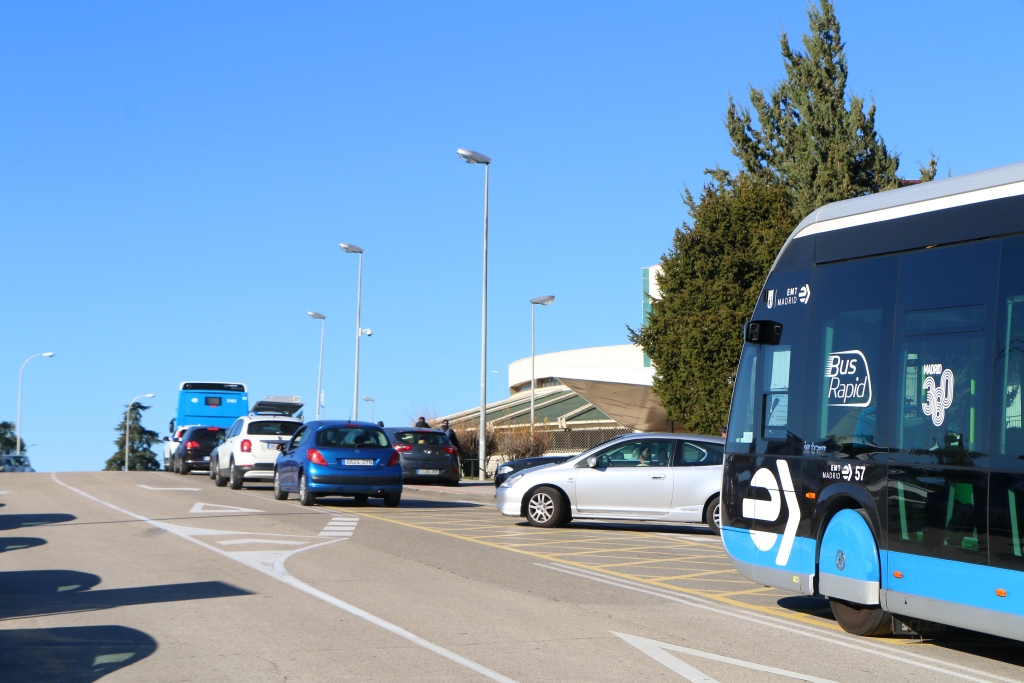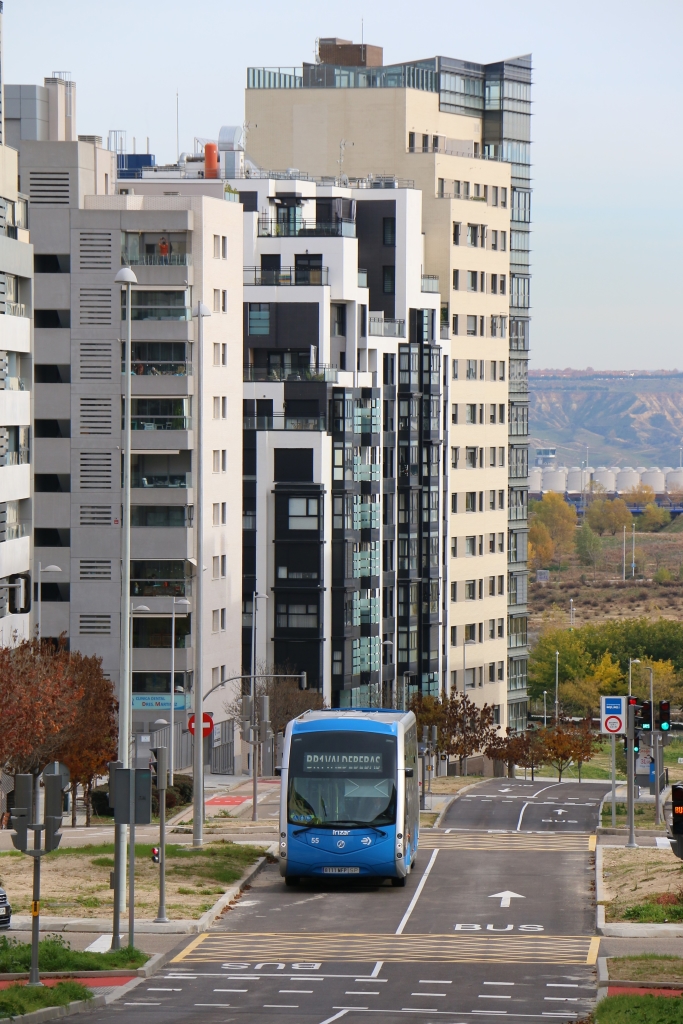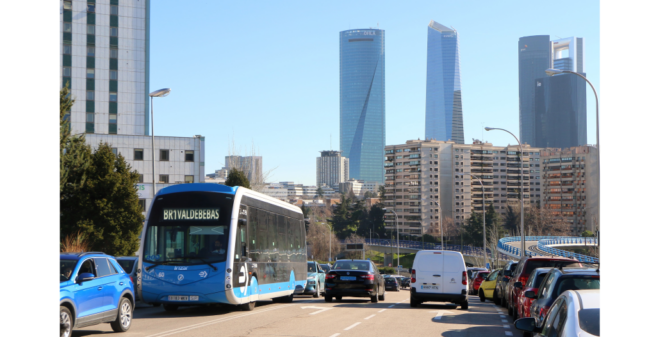
The first Bus Rapid Transit (BRT) line in the Spanish capital started passenger service with a lot of media coverage on 30 May 2023. As not all components of the system had yet been finalised, this service was referred to as a “test run” in the first few weeks and communicated to passengers as such. In the meantime, operations have settled down and the line has now been extended at its outer end at the beginning of November – serving the entire route originally announced a few months ago. We take a deeper look at the new service – after all, BRT is not very widespread in Europe compared to many other regions of the world, and what runs under this label often only has some of the various features of a fully-fledged Bus Rapid Transit system.
The new service in Madrid
The new “BR1” line of the EMT Madrid starts at the large Ramón y Cajal hospital complex, then runs without stopping for several kilometres along various sections of the urban railway motorways before crossing the Sanchinarro district. There, lanes of existing multi-lane roads were re-marked as bus lanes and new bus stop platforms were created. On its continuation into the Valdebebas district, the line runs on its own lanes, which are also structurally separated from private transport. The first terminus in Valdebebas was away from the larger buildings, but now that construction work has been completed, the line runs along additional, separate lanes through the entire neighbourhood, making it much more accessible.
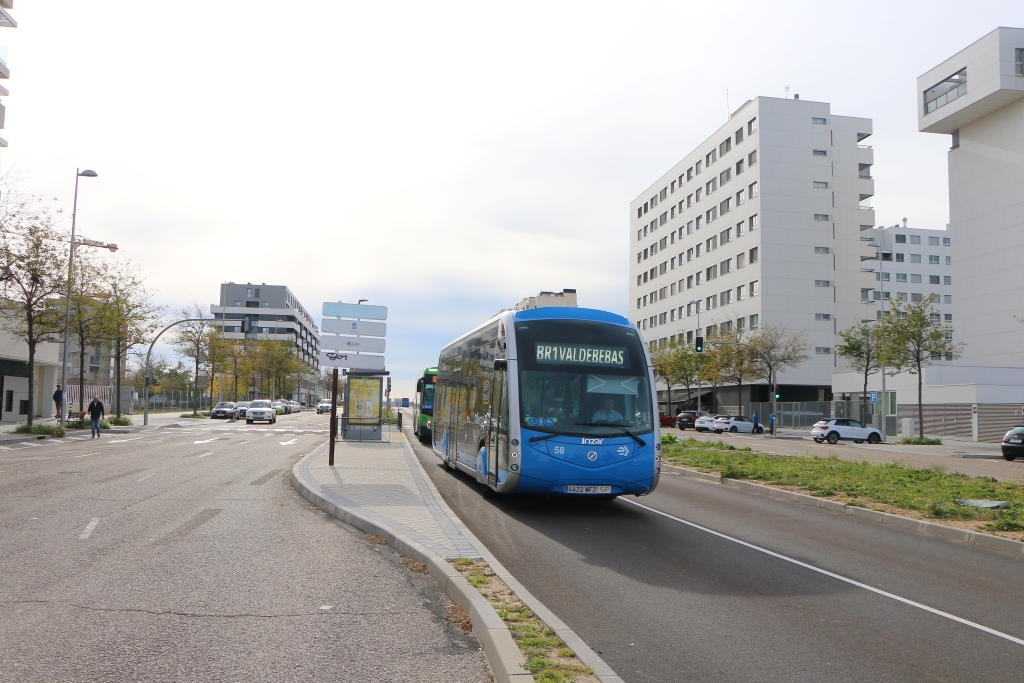
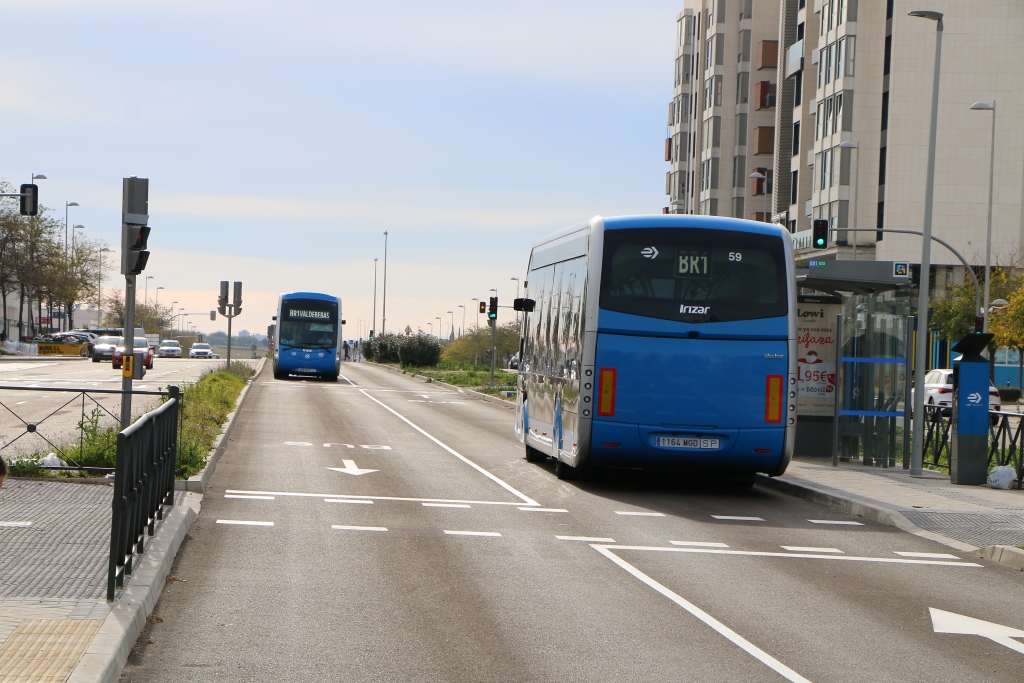
Ten 12-metre buses in BRT design from Spanish manufacturer Irizar e-mobility, model “ie tram 12”, are being used. Occasionally, e-buses of the conventional “ie bus 12” type from the same manufacturer are operating on the line, too.
The new “Bus Rápido” (express bus) is an interesting alternative to the previous services, but there is clearly room for improvement. This is mainly due to the route chosen, which barely utilises the potential of such a system. This is mainly due to the chosen terminus at Ramón y Cajal Hospital, which is closer to the city centre and only offers a transfer option (in addition to some bus lines) to the Cercanías commuter train, which runs here at irregular intervals of 10-20 minutes during the day. There are no connections or transfer options to the metro at any point, but the BR1 line crosses the ML1 (‘Metro Ligero’) tram line in the Sanchinarro district twice and the S-Bahn once again in Valdebebas. However, these crossing points are not even listed in the posted route maps at the stops and are rarely used in practice, basically because the transfer way to the tramway is unattractively long.
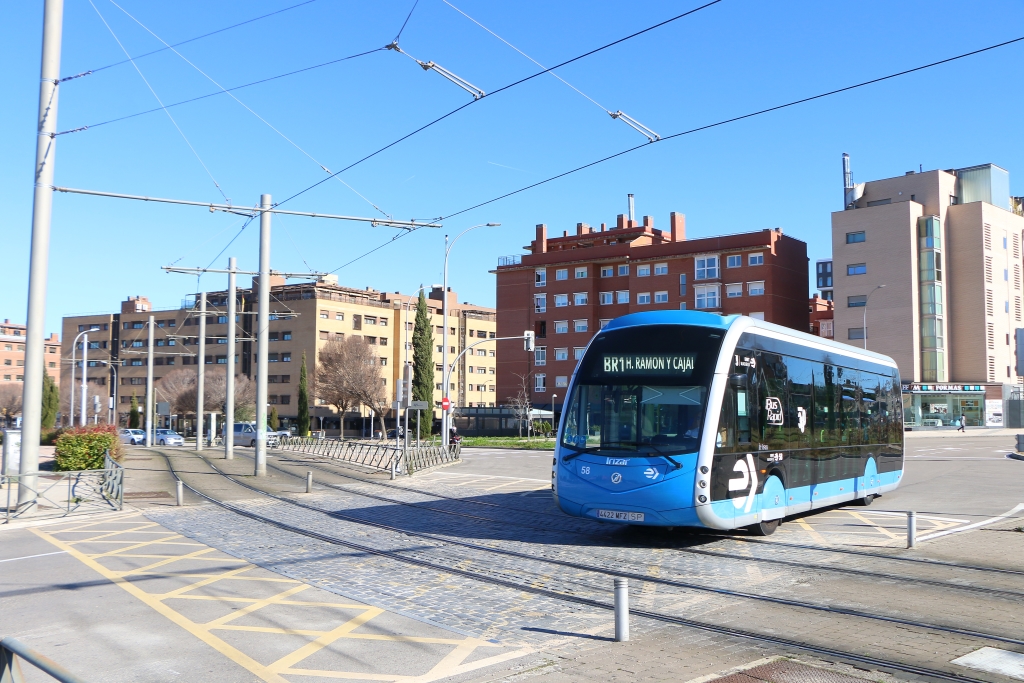
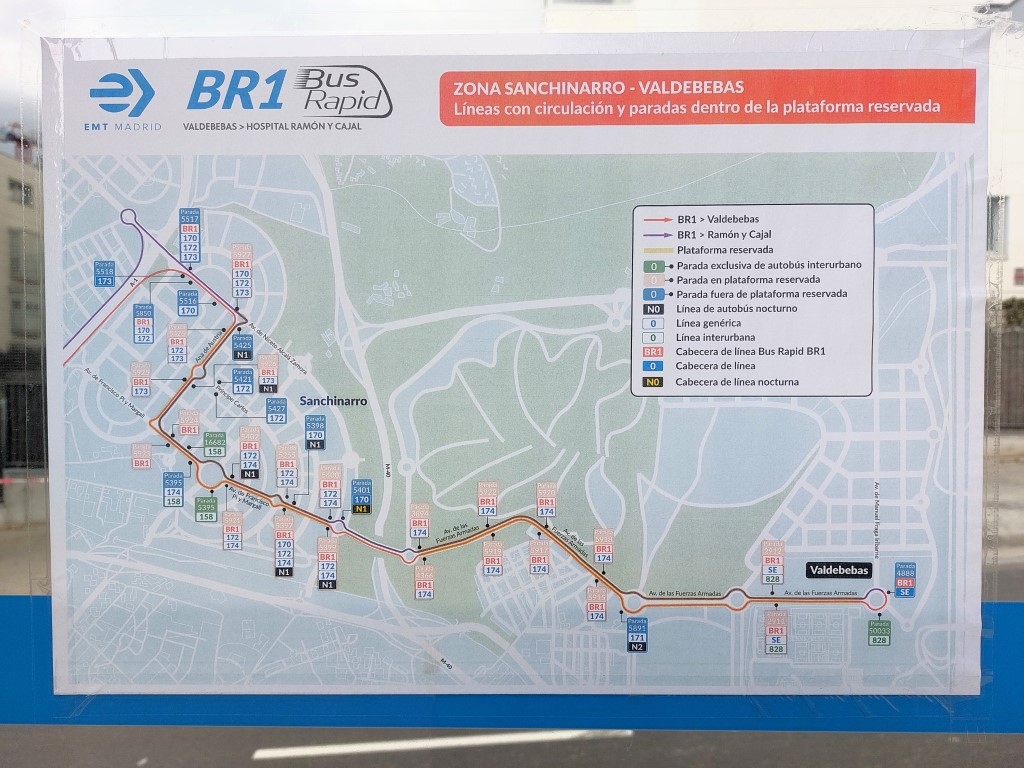
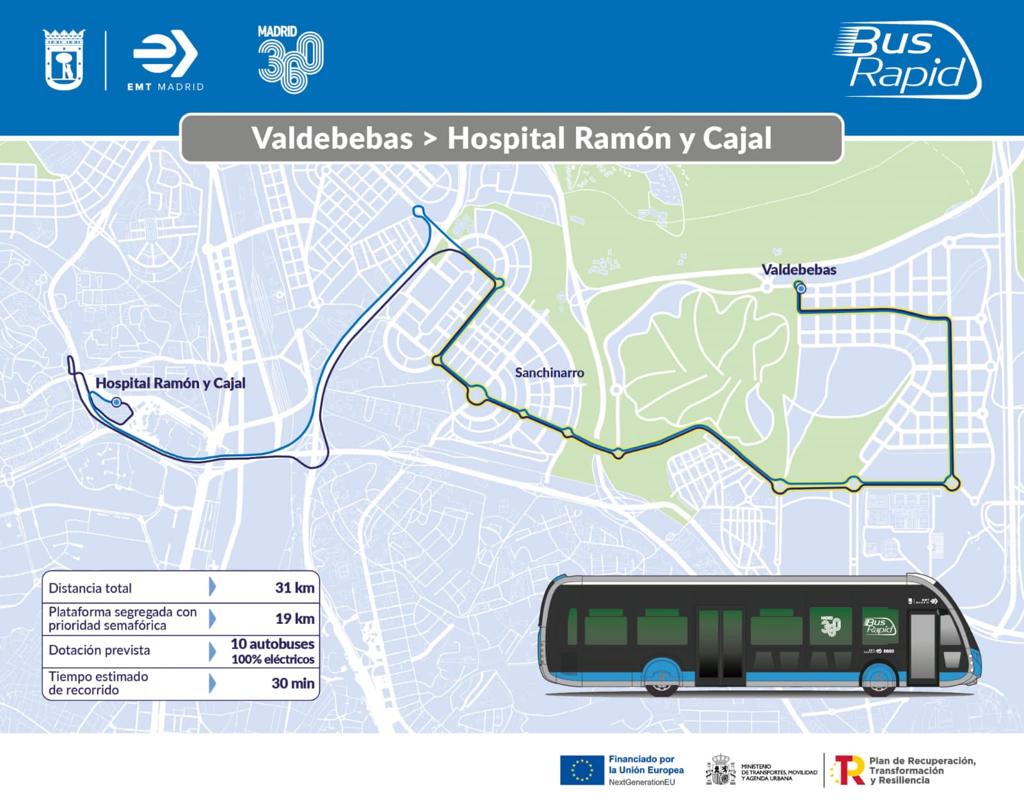
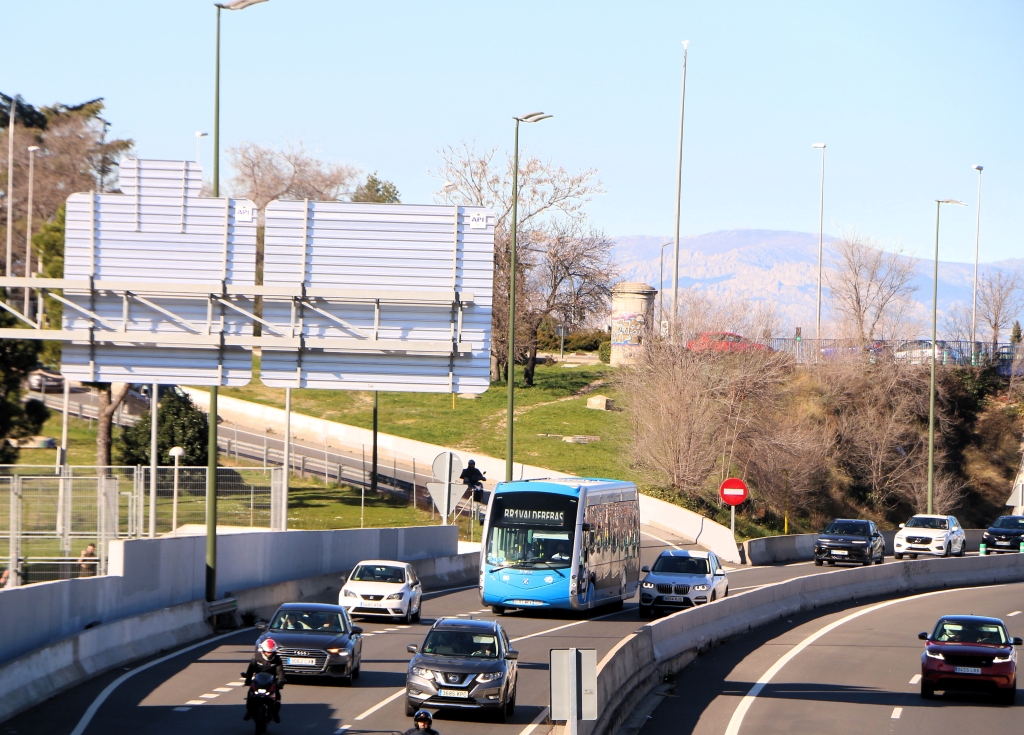
In addition, the total travel time of approximately 40 minutes between both termini is not a real competitive alternative to the individual car traffic. A private car trip from the Valdebebas district to the Hospital Ramón y Cajal takes little more than 15 minutes for most of the day, and if cars are stuck in usual traffic jam on the city motorway during the morning rush hour, this – unfortunately – applies to the Bus Rápido, too!
At present, traffic light signalling does not yet properly in a way that it really gives priority to the buses, they frequently have to stop at a red light. Room for improvement is clearly visible here.
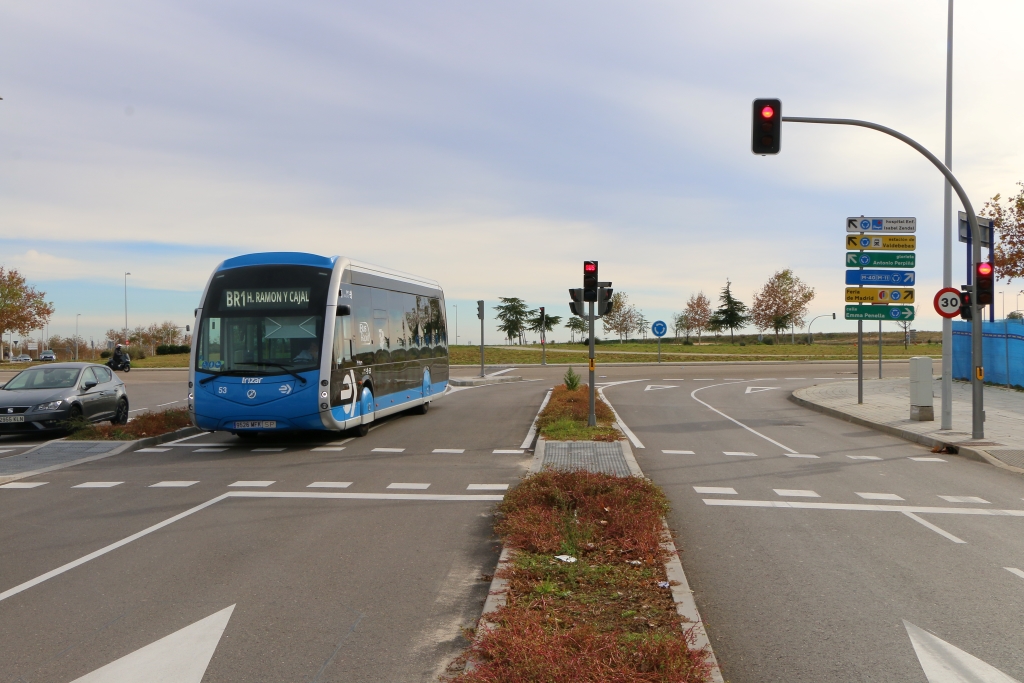
The integration of the new line into the extensive public transport network of Spain’s capital can certainly be improved in the future in order to significantly increase the acceptance of the comfortable new “Bus Rápido” and encourage further expansion elsewhere in the Madrid metropolitan area. These have already been announced by politicians for the surrounding areas of Madrid, including Majadahonda-Las Rozas, Alcorcón and new housing developments in Madrid’s Southeastern part. Passenger numbers for the first 6 weeks of the new BR1 line totalled around 40,000 passengers, which corresponds to around 750-900 passengers per day with an average occupancy of 4-5 passengers per total trip.
In the meantime, they have moderately increased, but are still a long way from adequate capacity utilisation. Perhaps those responsible locally will reconsider whether a more meaningful transfer point to the metro network, for example at Plaza Castilla, might contribute to greater acceptance. The investment of EUR 18.1 million in public funds spent on the project plus the considerable yearly 7-digit operating budget should certainly justify to take a deeper look into the subject.
